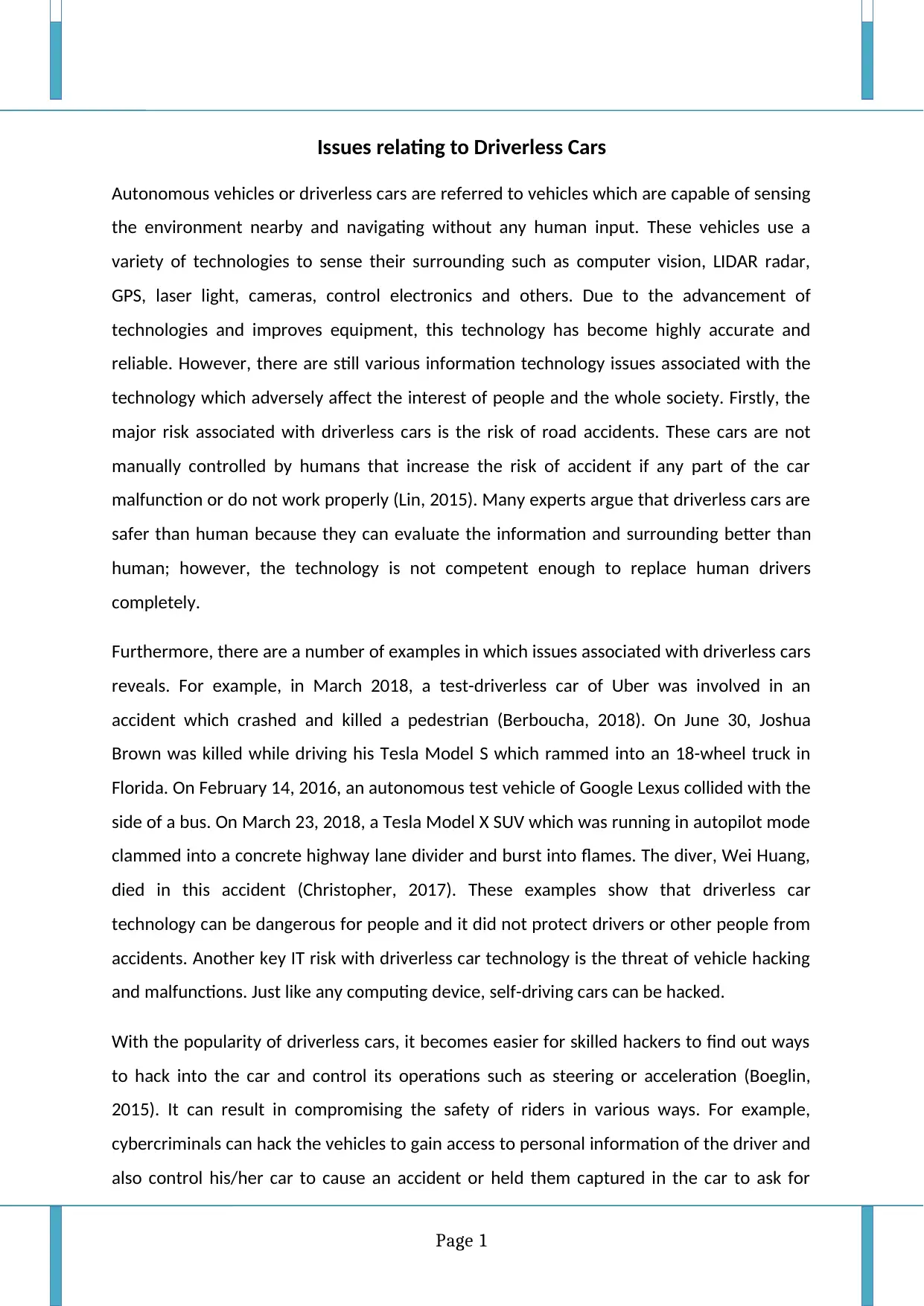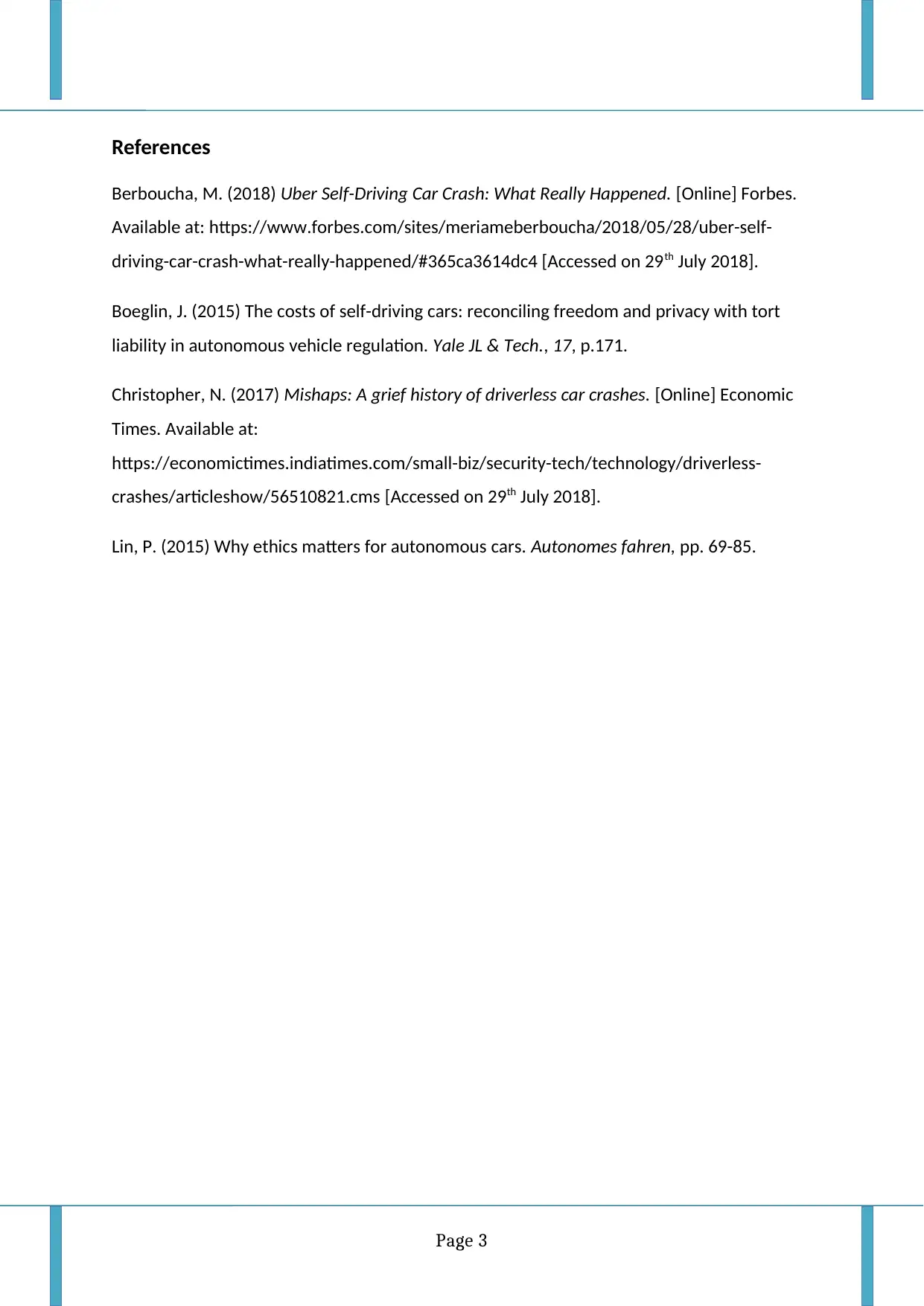Contemporary Issues in Information Technology: Driverless Car Analysis
VerifiedAdded on 2023/06/08
|4
|711
|115
Report
AI Summary
This report delves into the contemporary IT issues surrounding driverless cars, also known as autonomous vehicles. It highlights significant risks, including the potential for road accidents due to technological malfunctions or failures, with examples of real-world incidents. The report also addresses the threat of vehicle hacking, emphasizing the vulnerability of self-driving cars to cyberattacks that could compromise safety and privacy. Furthermore, it discusses the increasing electromagnetic field radiation associated with the technologies used in autonomous vehicles. Overall, the report underscores the various information technology risks associated with driverless car technology and their potential impact on society. The report uses sources like Forbes and Economic Times to support its analysis.
1 out of 4











![[object Object]](/_next/static/media/star-bottom.7253800d.svg)